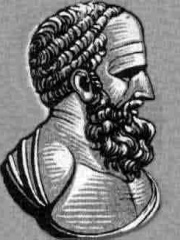
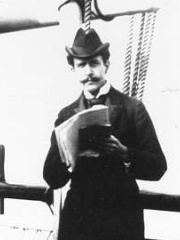
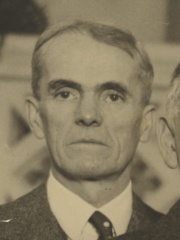

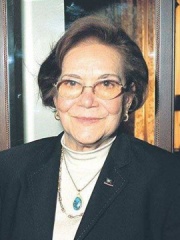
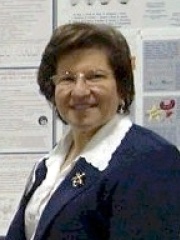
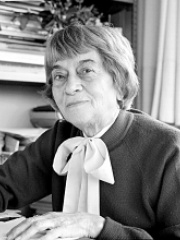
The Most Famous
ASTRONOMERS from Turkey
This page contains a list of the greatest Turkish Astronomers. The pantheon dataset contains 531 Astronomers, 8 of which were born in Turkey. This makes Turkey the birth place of the 14th most number of Astronomers behind Switzerland and Canada.
Top 8
The following people are considered by Pantheon to be the most legendary Turkish Astronomers of all time. This list of famous Turkish Astronomers is sorted by HPI (Historical Popularity Index), a metric that aggregates information on a biography’s online popularity.

1. Hipparchus (-190 - -120)
With an HPI of 74.29, Hipparchus is the most famous Turkish Astronomer. His biography has been translated into 71 different languages on wikipedia.
Hipparchus (; Greek: Ἵππαρχος, Hipparkhos; c. 190 – c. 120 BC) was a Greek astronomer, geographer, and mathematician. He is considered the founder of trigonometry, but is most famous for his incidental discovery of the precession of the equinoxes. Hipparchus was born in Nicaea, Bithynia, and probably died on the island of Rhodes, Greece. He is known to have been a working astronomer between 162 and 127 BC. Hipparchus is considered the greatest ancient astronomical observer and, by some, the greatest overall astronomer of antiquity. He was the first whose quantitative and accurate models for the motion of the Sun and Moon survive. For this he certainly made use of the observations and perhaps the mathematical techniques accumulated over centuries by the Babylonians and by Meton of Athens (fifth century BC), Timocharis, Aristyllus, Aristarchus of Samos, and Eratosthenes, among others. He developed trigonometry and constructed trigonometric tables, and he solved several problems of spherical trigonometry. With his solar and lunar theories and his trigonometry, he may have been the first to develop a reliable method to predict solar eclipses. His other reputed achievements include the discovery and measurement of Earth's precession, the compilation of the first known comprehensive star catalog from the western world, and possibly the invention of the astrolabe, as well as of the armillary sphere that he may have used in creating the star catalogue. Hipparchus is sometimes called the "father of astronomy", a title conferred on him by Jean Baptiste Joseph Delambre in 1817.

2. E. M. Antoniadi (1870 - 1944)
With an HPI of 58.31, E. M. Antoniadi is the 2nd most famous Turkish Astronomer. His biography has been translated into 32 different languages.
Eugène Michel Antoniadi (Greek: Ευγένιος Αντωνιάδης; 1 March 1870 – 10 February 1944) was a Greek-French astronomer.

3. Walter Sydney Adams (1876 - 1956)
With an HPI of 57.23, Walter Sydney Adams is the 3rd most famous Turkish Astronomer. His biography has been translated into 36 different languages.
Walter Sydney Adams (December 20, 1876 – May 11, 1956) was an American astronomer. He is renowned for his pioneering work in spectroscopy.

4. Cleomedes (110 - 1)
With an HPI of 55.48, Cleomedes is the 4th most famous Turkish Astronomer. His biography has been translated into 23 different languages.
Cleomedes (Greek: Κλεομήδης) was a Greek astronomer who is known chiefly for his book On the Circular Motions of the Celestial Bodies (Κυκλικὴ θεωρία μετεώρων), also known as The Heavens (Latin: Caelestia).

5. Cleostratus (-520 - -432)
With an HPI of 52.09, Cleostratus is the 5th most famous Turkish Astronomer. His biography has been translated into 18 different languages.
Cleostratus (Greek: Κλεόστρατος; b. c. 520 BC; d. possibly 432 BC) was an astronomer of ancient Greece. He was a native of Tenedos. He is believed by ancient historians to have introduced the zodiac (beginning with Aries and Sagittarius) and the solar calendar. According to J. Webb, Cleostratus took his ideas from the Babylonians. There is little primary material to credit any person with the creation or design of the Zodiac. Historical research into this has shown translation issues and coincidences including the Tenedos connection with the Philosopher Thales. Historical writings also refer to Cleostratus as a means of establishing a tradition of authority of Greek accomplishments. Continuation of Babylonian cycles is considered not to be scientific progress as the Greeks improved the accuracy of their cycles, only exercises in the art of combining days, months, and years, of which the relative mean durations had been learned from Babylon. The Greeks may have established a similar system, as other cultures had too, independently of the Babylonians. However, most agree that there can never be a definite answer for the argument concerning who established the first known system in the west. Pliny the Elder in his Natural History mentioned the zodiacal circle and commented: "Anaximander the Milesian, in the 58th Olympiad, is said to have been the first who understood its obliquity, and thus opened the road to a correct knowledge of the subject. Afterwards Cleostratus made the signs in it, first marking those of Aries and Sagittarius; Atlas had formed the sphere long before this time." Pliny also was writing in a way similar to his contemporaries in that a sound argument had to be based on past knowledge or the accomplishments of past thinkers. Censorinus (De Die Natali, c. 18) considers Cleostratus to have been the inventor of the octaeteris, or cycle of eight years. Cleostratus' name is associated with an eight-year intercalation cycle, to keep Greek civil calendars (lunar in nature) in line with the solar year, a cycle which was improved by Harpalus. The octaeteris was used before the Metonic cycle of 19 years, and was popularly attributed to Eudoxus. Theophrastus (de Sign. Pluv., p. 239, ed. Basil. 1541) mentions him as a meteorological observer along with Matricetas of Methymna and Phaeinus of Athens. Gaius Julius Hyginus (Poetica Astronomica, ii. 13) says that Cleostratus first pointed out the two stars in Auriga called Haedi. The crater Cleostratus on the Moon is named after him.

6. Dilhan Eryurt (1926 - 2012)
With an HPI of 47.95, Dilhan Eryurt is the 6th most famous Turkish Astronomer. Her biography has been translated into 25 different languages.
Dilhan Eryurt (29 November 1926 – 13 September 2012) was a Turkish astrophysicist who made major contributions to scientific research on the formation and evolution of the Sun and other main sequence stars. From 1961 to 1973, Eryurt worked for NASA, performing research for the Apollo program. She then established the astrophysics department at the Middle East Technical University (METU) in Turkey. She was the Dean of METU's science and arts faculty from 1988 to 1993.

7. Janet Akyüz Mattei (1943 - 2004)
With an HPI of 47.04, Janet Akyüz Mattei is the 7th most famous Turkish Astronomer. Her biography has been translated into 17 different languages.
Janet Hanula Mattei (née Akyüz; January 2, 1943 – March 22, 2004) was a Turkish-American astronomer who was the director of the American Association of Variable Star Observers (AAVSO) from 1973 to 2004.

8. Paris Pişmiş (1911 - 1999)
With an HPI of 45.63, Paris Pişmiş is the 8th most famous Turkish Astronomer. Her biography has been translated into 17 different languages.
Marie Paris Pişmiş de Recillas (Armenian: Բարիզ Փիշմիշ, 30 January 1911 – 1 August 1999) was an Armenian-Mexican astronomer. Pişmiş was born Mari Sukiasian (Armenian: Մարի Սուքիասեան) in 1911, in Ortaköy, Istanbul. She completed her high school studies at Üsküdar American Academy. In 1937, she became the first woman to get a Ph.D. from the Science Faculty of Istanbul University. Her advisor was Erwin Finlay Freundlich. Later, she went to Harvard University where she met her future husband Félix Recillas, a Mexican mathematician. They settled in Mexico, and she became the first professional astronomer in Mexico. According to Dorrit Hoffleit, "she is the one person most influential in establishing Mexico’s importance in astronomical education and research". For more than 50 years she worked at UNAM which awarded her a number of prizes including the "Science Teaching Prize". She was a member of the Mexican Academy of Sciences. Pişmiş studied among others the kinematics of galaxies, H II nebulae, the structure of open star clusters and planetary nebulae. She compiled the catalogue Pismis of 24 open clusters and 2 globular clusters in the southern hemisphere. In 1998, she published an autobiography entitled "Reminiscences in the Life of Paris Pişmiş: a Woman Astronomer". She died in 1999. According to her wish, she was cremated. Her daughter Elsa Recillas Pishmish, son-in-law Carlos Cruz-González, and grand-daughter Irene Cruz-González also became astronomers.
Pantheon has 8 people classified as astronomers born between 520 BC and 1943. Of these 8, none of them are still alive today. The most famous deceased astronomers include Hipparchus, E. M. Antoniadi, and Walter Sydney Adams.
Deceased Astronomers
Go to all Rankings
Hipparchus
190 BC - 120 BC
HPI: 74.29
E. M. Antoniadi
1870 - 1944
HPI: 58.31
Walter Sydney Adams
1876 - 1956
HPI: 57.23
Cleomedes
110 - 1
HPI: 55.48
Cleostratus
520 BC - 432 BC
HPI: 52.09
Dilhan Eryurt
1926 - 2012
HPI: 47.95
Janet Akyüz Mattei
1943 - 2004
HPI: 47.04
Paris Pişmiş
1911 - 1999
HPI: 45.63

Which Astronomers were alive at the same time? This visualization shows the lifespans of the 5 most globally memorable Astronomers since 1700.





